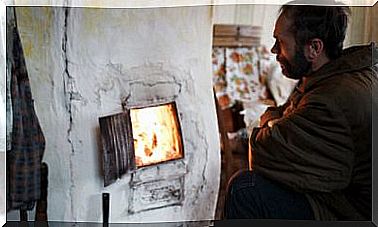The Rural Exodus In The 21st Century

The concept of rural exodus is linked to that of depopulation. It refers to the massive population loss caused by the aging of the population, low birth rates or displacement to other places. This process is having a huge demographic impact in Spain, Europe and other areas of the world.
Thus, it is common to see news that announce initiatives launched by some governments to attract young people to these rural areas that are running out of inhabitants. For example, the Italian government announced a few months ago “houses for 1 euro” for those families who agree to move and carry out their professional activities in “unpopulated” areas.
The objective of this article is to carry out an analysis of depopulation and its effects at the international level, using the situation in Spain as an example.

From rural exodus to depopulation
Depopulation phenomena can exist in large cities and highly populated areas. However, when this occurs in low-density areas, which lack an urban system that shapes their territory, the outlook is very negative.
In this sense, it is possible to observe a demographic desertification throughout the entire European map. Symptom of structural problems that can lead to the disappearance of communities with a long history behind them.
Spain emptied
In Spain, more than 85% of the population lives in less than 20% of the territory. This has led to talk of “empty Spain” or “emptied Spain”. In fact, according to the INE, the rural exodus is so great that rural areas lose about five inhabitants every hour.
Thus, provinces like Soria have seen their population drop by 23%, while others like Madrid have grown by 73%. This population movement has caused large regions to have population densities that compete in European rankings with Lapland, Norway.
More than 4,000 Spanish municipalities suffer serious depopulation and 1,840 localities are considered at risk of extinction. We are talking about two Spains: a thriving, which sees its population grow, and another in decline, empty and emptied.
A situation that, in addition, is now reaching the capitals of the region. Rural depopulation was first detected; now, according to experts, it is the turn of the medium-sized cities, the old regional centers. In this way, the headwaters of the region and provincial capitals, which previously held the population, are also beginning to decrease their number of inhabitants.
Consequences of the rural exodus
Among the main consequences of depopulation, the aging of the population stands out as a consequence of the abandonment of the rural environment of people of reproductive ages, especially women.
This initiates a dangerous demographic dynamic, which leads to a vegetative growth of the population (the difference between the birth and death rates is negative).
In the same way, the decrease in the propensity to migrate as a consequence of the aging of the population is notable. In other words, migrations from the countryside to the city decrease because all those who could or wanted to emigrate have already emigrated. This, in turn, implies a disuse and forgetfulness of knowledge and work that is poorly documented, but of great value.
Accessibility to unpopulated areas and communications tend to be poor; therefore, territorial development is difficult. This, in turn, implies a regressive landscape, caused by social sluggishness and urban dynamics.
The unequal distribution of the population creates a territory with little hierarchy, which requires the existence of intermediate cities that structure the territory.
In this sense, finally, there is an excessive growth in large cities, which in many cases are unable to accommodate and employ all their inhabitants.

Possible measures against depopulation: neo-naturalism
To combat this phenomenon, there is a parallel concept that is beginning to gain strength: neo-naturalism. This refers to the search for a life attached to nature, the rural world as a way of life. Thus, it is highlighted that technology facilitates field work or the possibility of teleworking.
In addition, initiatives are being promoted that seek to encourage rural tourism, such as green employment and the improvement of telecommunications and transport in rural areas. These programs are born within some governments as public policies, but also arise from the civil population as a form of entrepreneurship and social and demographic revolution.









